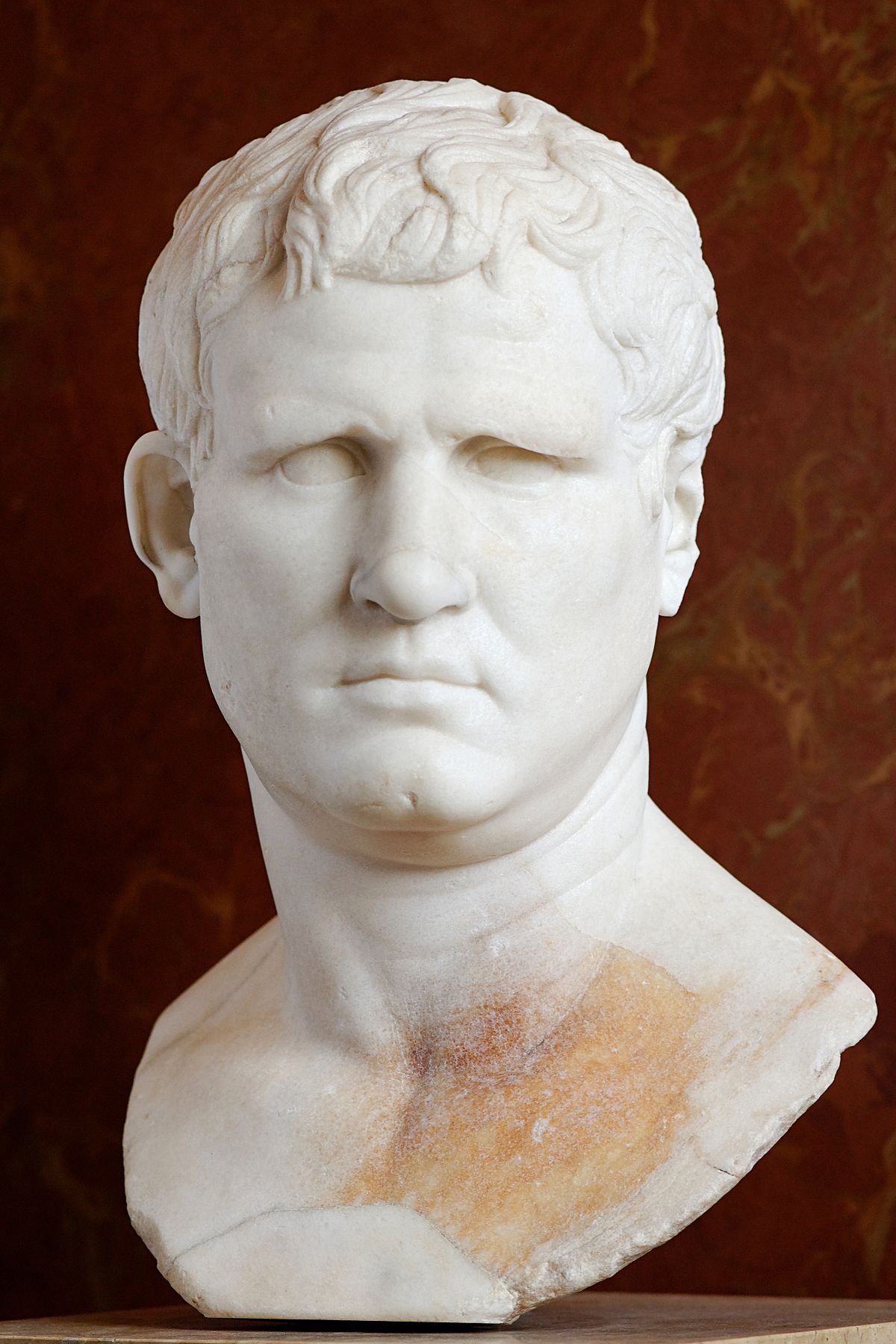IThe most trusted friend of Octavianus since his early years, partner in many battles, creator of many on land and sea victories – between all of them, the battle of Azio against Antony and Cleopatra – and a safe support for the rise to power of the future princeps, who chose him as his son-in-law, Marcus Vipsanius Agrippa emerged on the battlefields of Spain and Macedonia already under Julius Caesar.
Just in h is twenties, sent from Spain to Greece with Octavianus and his other dearest friend Maecenas, he dedicated himself also to the study of architecture, which would have become no less famous than his long and brilliant military and politic career. On the death of Caesar, on 44 b.C, the collaboration with his old friend became even closer and it characterised the complicated events followed by the Ided of March, which started the conquest of the power in Rome by Octavianus. After the important victories won against the Germanic tribes, once back to Rome in 37 b.C., he was elected consul for the first time. And in this capacity, he cared about creating a safe port for the fleet in the Tyrrhenian see. As an architect, he created a channel connecting the sea and the lakes of Lucrino and Averno, which allowed the construction of the new Portus Iulius, from Punta Epitaffio near Baiae at Punta Caruso, with a connection with the port of Cumae. Some decades later, the fleet was moved to the nearby port of Miseno. On that year, 12 b.C., Agrippa, which in the meantime hold the roles of the cursus honorum and had already governed important places outside Italy defending them with his military genius, chose to return to Campania where, feeling ill, he died at the age of only fifty one.
is twenties, sent from Spain to Greece with Octavianus and his other dearest friend Maecenas, he dedicated himself also to the study of architecture, which would have become no less famous than his long and brilliant military and politic career. On the death of Caesar, on 44 b.C, the collaboration with his old friend became even closer and it characterised the complicated events followed by the Ided of March, which started the conquest of the power in Rome by Octavianus. After the important victories won against the Germanic tribes, once back to Rome in 37 b.C., he was elected consul for the first time. And in this capacity, he cared about creating a safe port for the fleet in the Tyrrhenian see. As an architect, he created a channel connecting the sea and the lakes of Lucrino and Averno, which allowed the construction of the new Portus Iulius, from Punta Epitaffio near Baiae at Punta Caruso, with a connection with the port of Cumae. Some decades later, the fleet was moved to the nearby port of Miseno. On that year, 12 b.C., Agrippa, which in the meantime hold the roles of the cursus honorum and had already governed important places outside Italy defending them with his military genius, chose to return to Campania where, feeling ill, he died at the age of only fifty one.




Comments powered by CComment